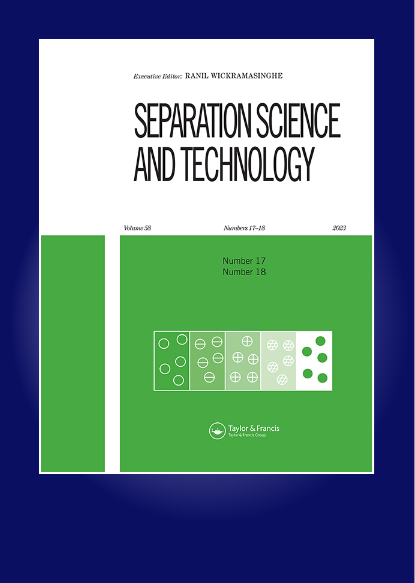Optimization of isotopic binary and multi-component separation cascades using a novel nature-inspired horse herd algorithm
IF 2.3
4区 工程技术
Q3 CHEMISTRY, MULTIDISCIPLINARY
引用次数: 0
Abstract
ABSTRACTThe gas centrifuge process is widely used in the world to separate binary and multi component mixtures of isotopes. The majority of a plant cost is related to the number of centrifuges in a cascade. The cascade should be built so that it uses the fewest possible centrifuges for a given product and waste concentrations. Minimizing the number of centrifuges and the total flow rates, is a key point in designing and optimizing isotope separation cascades. The main purpose of this paper is to present a novel swarm intelligence based algorithm to solve these kinds of problems. This novel algorithm, called the Horse Herd Optimization Algorithm (HOA), is inspired by the behavioral patterns of horses in their habitats. In this work, it is demonstrated that the suggested algorithm can solve complicated multidimensional problems. HOA is tested by some test functions of high-dimensions and the results are compared with the strongest available optimization algorithms. In next, the proposed algorithm is used to optimize gas centrifuge cascades for the separation of binary and multicomponent mixtures of isotopes in several cases. Also, ideal and optimum cascades are compared in different separating regimes of the stages, using this method. Considering the performance of HOA in solving multidimensional problems, this algorithm is proposed for the optimization of long cascades.KEYWORDS: Swarm intelligenceHOAgas CentrifugecascadeOptimization Disclosure statementNo potential conflict of interest was reported by the author(s).利用新颖的自然启发的马群算法优化同位素二元和多组分分离级联
摘要气体离心分离法在国际上被广泛用于分离二元和多组分同位素混合物。工厂的大部分成本与级联离心机的数量有关。级联的建造应该使它使用尽可能少的离心机来处理给定的产品和废物浓度。离心机数量和总流速的最小化是设计和优化同位素分离叶栅的关键。本文的主要目的是提出一种新的基于群体智能的算法来解决这类问题。这种新算法被称为马群优化算法(HOA),其灵感来自马在其栖息地的行为模式。实验结果表明,该算法可以解决复杂的多维问题。利用一些高维测试函数对HOA进行了测试,并将测试结果与现有的最强优化算法进行了比较。接下来,将该算法应用于几种分离二元和多组分同位素混合物的气体离心级联优化。并用该方法对不同分离制度下的理想级联和最佳级联进行了比较。考虑到HOA算法在求解多维问题中的性能,提出了一种用于长级联优化的算法。关键词:群体智能hoagas离心机cascade优化披露声明作者未报告潜在利益冲突。
本文章由计算机程序翻译,如有差异,请以英文原文为准。
求助全文
约1分钟内获得全文
求助全文
来源期刊

Separation Science and Technology
工程技术-工程:化工
CiteScore
6.10
自引率
3.60%
发文量
131
审稿时长
5.7 months
期刊介绍:
This international journal deals with fundamental and applied aspects of separation processes related to a number of fields. A wide range of topics are covered in the journal including adsorption, membranes, extraction, distillation, absorption, centrifugation, crystallization, precipitation, reactive separations, hybrid processes, continuous separations, carbon capture, flocculation and magnetic separations. The journal focuses on state of the art preparative separations and theoretical contributions to the field of separation science. Applications include environmental, energy, water, and biotechnology. The journal does not publish analytical separation papers unless they contain new fundamental contributions to the field of separation science.
 求助内容:
求助内容: 应助结果提醒方式:
应助结果提醒方式:


